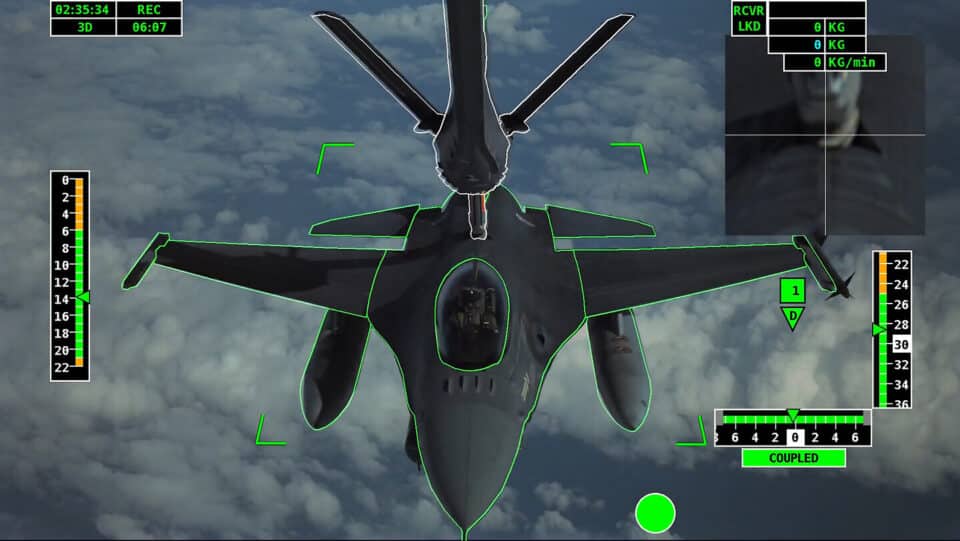Aviation
The world’s first automatic refuelling Airbus A330 MRTT has been certified.
the Airbus A330 MRTT has become the first tanker in the world to be authorised for autonomous air-to-air refuelling (A3R) boom operations in daylight (RSAF).@AirbusDefence #SmartMRTT #A3R #UpNext #FIA2022

Following a successful campaign in conjunction with the Republic of Singapore Air Force, the Airbus A330 MRTT has become the first tanker in the world to be authorised for autonomous air-to-air refuelling (A3R) boom operations in daylight (RSAF).
This capability is a component of the new SMART MRTT created by Airbus and certified by the Spanish National Institute for Aerospace Technology (INTA). The aim of the A3R system is to optimise the pace of air-to-air refuelling (AAR) transfer in operational situations to enable air superiority while reducing the burden of the air refuelling operator (ARO), improving safety, and requiring no new equipment on the receiving aircraft.
“The world’s first automated contact with a boom system in a joint operation with the Royal Australian Air Force in 2018 marked the beginning of a successful journey that culminated in the certification of the A3R capability” (RAAF). Since then, with the help of our customers, particularly with the crucial involvement of our partner the RSAF, a launch customer and the first operator to take advantage of this paradigm-shifting capability, we’ve accomplished more aeronautical “world firsts.” With improved air refuelling capabilities, the A330 MRTT maintains its technological edge, according to Jean-Brice Dumont, Head of Military Air Systems at Airbus Defence and Space.
An RSAF A330 MRTT participated in the development, flight test campaign, and certification of the A3R as part of the collaboration between Airbus and the RSAF for the development of the SMART MRTT. Furthermore, improved maintenance capabilities have been created, enabling quicker completion of ground operations while giving a way to make the best possible use of spare components.
The A330 MRTT will continue to develop in this direction. Auto’Mate, a demonstration that will develop, adapt, mature, integrate, and assess technologies enabling autonomous assets air-to-air refuelling (A4R) and autonomous formation flight (AF2) operations, has been established by Airbus through its subsidiary Airbus UpNext. The primary goal of Auto’Mate will be to automate the reception aircraft’s operations, which calls for a number of novel technologies that serve as the foundation of the UpNext Auto’Mate demonstrator.
In both scenarios, an A310 will serve as the Tanker Refuelling Flight Test Bed and DT-25 Target Drones will serve as the receiving aircraft. These technological building blocks will be evaluated in flight during 2023 with a final end-to-end demonstration mid-2024. Reduce crew fatigue and training expenses, increase safety and efficiency, and pioneer unmanned air-to-air refuelling operations (including unmanned-to-unmanned AAR operations), a highly desired capability for future defence scenarios. These are just a few of the benefits of the technologies developed in the Airbus Auto’Mate demonstrator. The first UpNext demonstrator to be introduced, created, and finished in Spain is Auto’Mate.

Aviation
COMAC Unveils Plans for the C929 to Rival Airbus and Boeing

After the success of China’s first C919 aircraft, the country is setting its sights on developing a larger plane. COMAC (Commercial Aircraft Corporation of China) has officially confirmed plans to build a widebody aircraft, marking a significant step in its aircraft lineup.
Traditionally, Airbus and Boeing dominate the widebody aircraft market, with decades of expertise in developing planes and engines capable of carrying heavy payloads. China, which currently relies on imported engines, is now aiming to challenge these giants with its own widebody jet, the C929, designed to compete with the Airbus A350 and Boeing 777.
American Airlines Is Looking for Flight Attendants: Apply Now
The C929 will be China’s first independently developed long-range widebody aircraft. It adheres to international airworthiness standards and boasts independent intellectual property rights. The baseline version is designed to seat 280 passengers and offers a range of 12,000 kilometers, catering to global demand for both regional and international air travel.
Russia, which also needs reliable narrowbody and widebody aircraft, could become a key customer for the C929. Additionally, China plans to target the broader Asian market as it continues to expand its aviation capabilities.
Close Call at Heathrow: BA Flight Narrowly Escapes Drone Collision
China’s aviation progress includes the ARJ21 (now called C909), a regional jet with 100 seats for shorter routes, and the C919, a narrowbody jet with 180 seats designed to rival the Boeing 737 MAX and Airbus A320. Both models have found increasing demand in the domestic market.
At China’s largest air show in Zhuhai, COMAC announced that Air China will be the launch customer for the C929 widebody jet, though details about order size and delivery timelines were not disclosed.
Other major deals announced by COMAC include:
- Hainan Airlines: Firm orders for 60 C919 and 40 C909 regional jets.
- Colorful Guizhou Airlines: 30 C909 jets, with 20 firm orders and 10 provisional agreements.
The C929, renamed from the CR929 after Russia withdrew from the joint development project in 2023, is expected to carry 280–400 passengers with a range of 12,000 kilometers, competing directly with Boeing’s 787 Dreamliner.
According to COMAC’s deputy general manager, Tong Yu, the first fuselage section of the C929 is expected by September 2027, with prototype test flights anticipated soon after.
-

 Aviation2 months ago
Aviation2 months agoMicrosoft Flight Simulator Raises $3 Million to Bring Back the An-225 Mriya
-

 Airlines2 months ago
Airlines2 months agoQantas Engineers Stage Walkout Over Cost of Living Concerns
-

 Airlines2 months ago
Airlines2 months agoQatar Citizens Can Travel to the United States Without a Visa
-

 Aviation2 months ago
Aviation2 months agoQatar Airways bans these new Electronic Devices on plane
-

 Airlines2 months ago
Airlines2 months agoJapan Airlines Rolls Out Free Domestic Flights to International Passengers
-

 Defence2 months ago
Defence2 months agoWhich Country Has the Largest Fleet of Fighter Aircraft?
-

 Airport2 months ago
Airport2 months agoWestern Sydney Airport Welcomes Its First Plane After 6 Years of construction
-

 Travel2 months ago
Travel2 months agoQatar Airways Launches Four Additional Flights from Amsterdam








